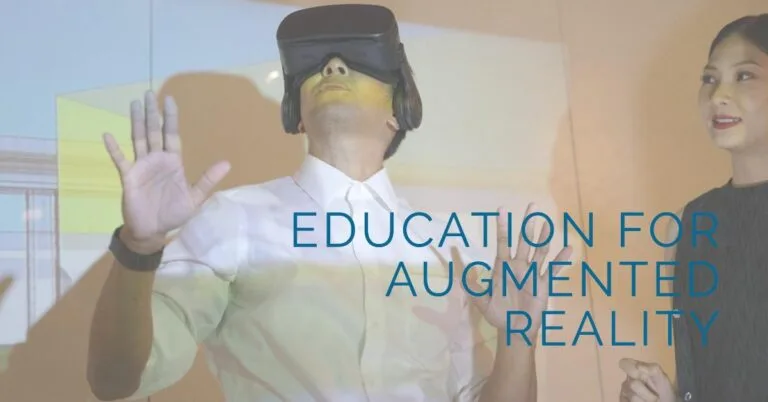
The Future of Augmented Reality in Sports Apparel and Equipment
As someone who’s always on the lookout for what’s next in the world of sports, I’ve been absolutely captivated by the incredible potential of augmented reality (AR) in transforming sports apparel and equipment. From personalized gear that fits like a second skin to real-time performance data that helps athletes push their limits, AR is set to revolutionize how we experience sports.
In this article, we’ll delve into the exciting innovations that AR is bringing to the table, explore the benefits it offers to athletes, manufacturers, and fans alike, and peek into the future trends that are shaping this dynamic field. So, grab your virtual goggles, and let’s embark on this thrilling journey into the future of sports!
Innovations in AR for Designing and Customizing Sports Gear
Your Gear, Your Way: Personalized Fit and Comfort
Remember those days of trying on countless jerseys and shoes, hoping to find the perfect fit? Well, AR is here to bid those frustrating experiences farewell! With AR-powered scanning and measurement tools, athletes can now get precise body measurements, enabling manufacturers to create custom-fit sportswear that’s as unique as their fingerprints.
Brands like Nike and Adidas are already leveraging AR to offer personalized fit solutions, ensuring that every athlete feels comfortable and confident in their gear. Imagine slipping into a pair of running shoes that are tailor-made for your feet, providing optimal support and minimizing the risk of injuries.
From Imagination to Reality: Virtual Prototyping and Design
Designing sports apparel and equipment is an intricate process that often involves numerous iterations and prototypes. AR is streamlining this process by allowing designers to visualize and modify their creations in real time. They can experiment with different materials, colors, and patterns, all within a virtual environment.
This not only saves time and resources but also fosters a more collaborative design process. Designers can easily share their virtual prototypes with athletes, coaches, and other stakeholders, gathering valuable feedback and making necessary adjustments on the fly.
Try Before You Buy: Enhanced Product Visualization
Ever wished you could see how a new pair of cleats would look on your feet or how a helmet would fit before making a purchase? AR is turning this wish into reality. With AR-enabled apps, you can virtually try on sports apparel and equipment, getting a realistic preview of how they’ll look and feel.
This immersive experience not only enhances customer satisfaction but also reduces the likelihood of returns. Athletes can make informed decisions, confident that their chosen gear is the perfect match for their needs and style.
Potential Benefits for Athletes
Beyond Human Limits: Performance Optimization
AR is going beyond aesthetics and stepping into the realm of performance enhancement. Wearable AR devices, such as smart glasses and AR-enabled clothing, are empowering athletes to monitor their movements, track vital statistics, and receive real-time feedback.
Imagine a tennis player wearing AR glasses that analyze their swing, highlighting areas for improvement. Or a cyclist with AR-enabled clothing that monitors their heart rate, cadence, and power output, helping them optimize their training. The possibilities are truly limitless.
Staying in the Game: Injury Prevention and Rehabilitation
Injuries are an unfortunate reality in sports, but AR is playing a crucial role in both prevention and rehabilitation. AR-powered systems can analyze an athlete’s movements, identifying potential risk factors for injuries and suggesting corrective measures.
Moreover, AR is being integrated into rehabilitation programs, guiding athletes through exercises and ensuring proper form. This not only accelerates recovery but also reduces the risk of re-injury.
Advantages for Manufacturers – From Factory Floor to Fanfare: AR for Manufacturers
Efficiency Unleashed: Streamlined Production Processes
The impact of AR isn’t limited to athletes and consumers; manufacturers are reaping the benefits as well. As mentioned earlier, virtual prototyping helps manufacturers reduce material waste and streamline production processes.
AR is also being used in quality control, ensuring that every piece of equipment meets the highest standards. Assembly line workers can use AR overlays to guide them through complex tasks, improving efficiency and reducing errors.
The Buzz is Real: Enhanced Marketing and Customer Engagement
AR is transforming the way sports brands market their products and engage with their customers. Interactive AR campaigns allow consumers to experience products in a whole new way, creating a buzz and driving sales.
For example, Nike’s AR app allows users to scan products and unlock exclusive content, such as athlete stories and behind-the-scenes footage. This immersive experience strengthens brand loyalty and encourages repeat purchases.
AR in Enhancing Fan Experience
Beyond the Stands: Interactive Fan Engagement
Attending a live sporting event is an exhilarating experience, but AR is taking it to the next level. From virtual seat selection to real-time statistics and replays, AR is enhancing the fan experience both in stadiums and at home.
Fans can even interact with their favorite athletes through AR, taking virtual selfies or participating in challenges. This personalized and immersive experience deepens the connection between fans and their beloved teams.
Sharing the Excitement: Social Media Integration
Social media is a powerful tool for fan engagement, and AR is making it even more exciting. Fans can now create and share AR-powered content, such as filters and stickers featuring their favorite teams and athletes.
This not only amplifies the social media presence of sports brands but also creates a sense of community among fans. It’s a win-win situation for everyone involved.
Advancements in AR Hardware: Future Trends and Developments
The Next Generation: Advancements in AR Hardware
The future of AR in sports hinges on the development of advanced hardware. We can expect to see lighter, more comfortable, and more powerful AR glasses and wearables in the coming years.
These devices will seamlessly integrate with AI and machine learning, offering even more personalized and immersive experiences. Imagine AR glasses that can track your every move, providing real-time coaching and analysis, all while you’re in the heat of the game.
Pushing the Boundaries: Expansion of AR Applications
The potential applications of AR in sports are vast and varied. We can anticipate AR being integrated into new sports and fitness activities, such as virtual reality training simulations and AR-guided hiking trails.
The democratization of AR technology will also lead to widespread adoption in both professional and amateur sports. From weekend warriors to Olympic athletes, everyone will have the opportunity to harness the power of AR to enhance their performance and enjoyment of sports.
Navigating the Challenges: Considerations for the Future
Overcoming Technical Hurdles
While the future of AR in sports is undeniably bright, there are still some technical challenges to overcome. These include infrastructure limitations, latency issues, and the need for more powerful and efficient AR devices.
However, with ongoing advancements in technology, these challenges are likely to be addressed in the near future, paving the way for seamless and immersive AR experiences.
Protecting Privacy and Ensuring Ethical Use
As with any emerging technology, AR raises concerns about data collection and user privacy. It’s crucial for developers and manufacturers to prioritize transparency and ensure that user data is handled responsibly.
Furthermore, ethical considerations arise when AR is used for performance enhancement. It’s important to strike a balance between leveraging technology to improve performance and maintaining the integrity and fairness of sports.
FAQs About Augmented Reality in Sports
Is AR technology only for professional athletes?
Absolutely not! While AR can certainly benefit professional athletes, it’s also becoming increasingly accessible to amateur athletes and fitness enthusiasts. There are already numerous AR apps and wearables available for everyday use.
How can AR help prevent sports injuries?
AR-powered systems can analyze an athlete’s movements, identifying potential risk factors for injuries and suggesting corrective measures. This can be particularly helpful in preventing overuse injuries and improving form.
Will AR replace traditional sports equipment?
AR is more likely to complement and enhance traditional sports equipment rather than replace it. For example, AR overlays can be used to provide real-time data and feedback on existing equipment, such as helmets or rackets.
What are some of the challenges facing the widespread adoption of AR in sports?
Cost and accessibility are current barriers to widespread adoption. While AR technology is becoming more affordable, high-quality AR devices can still be expensive. Additionally, not all sports venues or training facilities have the infrastructure to support AR applications.
Are there any ethical concerns surrounding the use of AR in sports?
Yes, there are ethical considerations regarding the use of AR for performance enhancement, especially in competitive sports. It’s important to ensure that AR technologies don’t create an unfair advantage for some athletes over others. Additionally, data privacy and security are important concerns when dealing with personal performance data collected through AR devices.
Conclusion: A New Era of Sports
The future of augmented reality in sports apparel and equipment is incredibly promising. AR is poised to redefine how athletes train, compete, and connect with fans, while manufacturers and brands embrace new opportunities for innovation and growth.
The future of augmented reality in sports apparel and equipment is a dynamic and ever-evolving landscape. It’s a future where athletes can personalize their gear, optimize their performance, and prevent injuries, all while fans experience sports in a more immersive and engaging way.
As we continue to push the boundaries of what’s possible with AR, we can look forward to a future where sports are more accessible, personalized, and exciting than ever before. So, whether you’re an athlete, a fan, or a tech enthusiast, get ready to embrace the AR revolution and witness the transformation of sports as we know it.
I hope this article has given you a glimpse into the exciting future that awaits us in the world of sports and augmented reality. If you have any questions or comments, feel free to share them below. Let’s keep the conversation going and explore the endless possibilities together!






